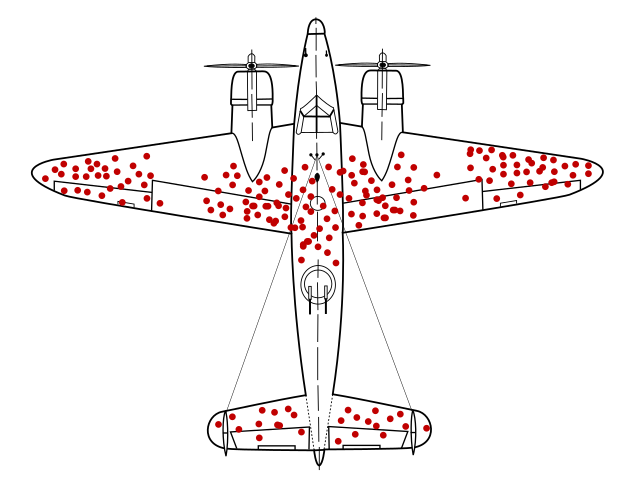Are you sure old ACs actually worked better, or are you just remembering a time from your childhood when climate change wasn’t as bad and summers were cooler?
And houses were smaller. And electricity cheaper.
I’ve seen frost blow out of older air-conditioning units they would run so cold…
I’ve seen that happen to newer ones. They still freeze up around here if you run them all the time.
I’m not talking freezing up I’m talking putting out 30 degree air after running for 15 minutes… Good job trying to down play the efficiency loss we suffered moving away from horrible refrigerants. We are better for it but the change In Refrigerants was the biggest cause of difference.
Hell i have had snow flakes in a car with older r12 and full on Florida humidity.
Oh this is just a funny honey bunny. But the one I had did last 20 years.

I don’t get it :(
It looks like old AC units last forever because you only see the ones that are still working, not those that failed over the years. Classic survivorship bias.
Also they totally neglect just show the energy usage graphs and total cost of ownership
The picture is used as a classical example of survivor bias. When air planes came back after combat, they checked where all the bullet holes were. That’s what the graph shows. The naive conclusion is that the areas that have the most bullet holes should be reinforced with armour. The correct conclusion is that the areas that don’t have bullet holes are the critical zones that need to be reinforced, no planes return after getting a bullet there, which explained why there is no data showing the bullet holes in those locations.
Survivor bias.
I suppose what’s being implied, is that the only old ass air conditions that you see nowadays, are above average and that’s why they’ve survived.
Thanks!
Is this rage bait? Old ACs are a joke when compared to modern ones
We had many of those old ACs to know they were shit. Modern ones are great compared to them.
Although hugely inefficient in both materials and energy.
Reliability tends to be in opposition to efficiency for mechanical stuff. Yeah, it sucks more energy which is bad, but if you use 50% less stuff for an efficient unit but end up replacing it 4 times while the old one still runs you end up using more materials.
We need a happy medium between as efficient as possible but only last for a few years and reliable but very inefficient.
The flip side is we don’t think about the old ACs that destroyed themselves inside the expected lifetime, we only see the freaks that blast on regardless of damage and just never deteriorate. If the old ones all lasted 50+ years, we wouldn’t see people needing to buy new ones.
It’s still probably the case that older devices without plastic control boards lasted longer, but it’s worth remembering that we only see the edge cases.
Also, some of the old appliances will keep trying to function even when they’ve degraded to the point of being nearly inoperable, where the new device will be able to detect that it’s not working right and shutdown, probably before it’s not worth it to run anymore, but probably in time to be reparable.Cost is the third point of the triangle. You can get good efficiency and reliability if it costs more.
That might be true for materials but a large percentage of those can likely be reused while energy inefficiency is a much larger problem.
Also louder, bigger, noisier
Draft Punk
Draft Punk
They’re called window rattlers for a reason.
I love when it’s a hot summer day and you’re in a big city. You get to play my favorite game of “is it raining or are there ACs dripping on me”
And noisy as hell, and they take up way more space, and they look trashy
And breed bacteria and mold.
CFC’s are great at coolimg things as long as you do not care about having an ozone layer.
Here’s the thing. CFCs were used until the manufacturers could patent the next harmful chemical to keep the profits. The replacements are also bad, it turns out. Just like how all that “BPA plastic” hubub ended up with “BPA-free plastic” that was literally just another synthetic estrogen. Same problem, but it isn’t BPA so people thought the problem was solved.
CFCs:
- Bad
HCFCs:
- Slightly less bad, but: HCFCs still have some ozone depletion potential (ODP) and are being phased out under the Montreal Protocol.
HFCs:
- HFCs do not contain chlorine, so they have zero ozone depletion potential (ODP).
- They are potent greenhouse gases with high global warming potential (GWP), leading to further phase-outs under the Kigali Amendment to the Montreal Protocol.
Now they’re shooting for:
- hydrofluoroolefins (HFOs) and natural refrigerants (like CO₂, ammonia, and hydrocarbons).
Reality is, the trope with old cooling machines being so much better than newer ones is that they didn’t care about “efficiency” when designing them and the machines just ground their compressors to death getting the job done.
New AC units use modulated power to the motors, multiple cooling stages, and other “efficiency” features to make them more energy-efficient, start more gently, and run “better” on paper (although the added complexity, as statistical analysis will show, also adds to more reasons for the machines to fail.)
I actually recently begrudgingly went from a 20 year old “last of the CFCs” type AC unit to a modern one using one of the newer-but-eventually-will-be-banned refrigerants. Didn’t want to give it up, for the trope. When all said and done, I went from a 12F degree temp differential across the old unit to 24F on the new unit. (Input temp drops by X degrees on output.)
And the CFCs were safely bottled up from the system when replaced (although they likely made a hefty profit on the stuff since it is banned but can be reused in the US.)
CFC’s are great at coolimg things as long as you do not care about having an ozone layer.
They’re even fine if you care about the ozone layer so long as you never ever let any leak. Until the coolant leaks the CFCs are cycling in a closed system in which they can’t do any damage. The problem is that “not letting any leak” is harder than it sounds, and the newer coolants just don’t do the job as well.
It’s like how asbestos tiles are fine until they get damaged, and then they fuck the lungs of anyone unfortunate enough to breathe in a tiny bit of it.
I thought that was over
The ozone hole is mostly repaired, because we stopped using CFC’s.
I think it’s more accurate to say the problem is mostly solved and its on track to being repaired rather than mostly repaired.
Antarctic ozone hole:
2000: 28.3 million sq km (largest recorded).
2020: 24 million sq km.
2024: 20 million sq km (approx 3x size of usa).Global ozone levels will return to 1980 levels around 2040.
Arctic ozone will recover by 2045 (currently around 1 million sq km).
Antarctic ozone hole will fully recover by 2066.Yup much like with acid rain Reagan and George HW Bush stepped up environmental regulations to confront the problem.
As most of the problem was due to America’s use of CFC’s it was their issue to solve.
Mold. So. Much. Mold.
Where I lived as a teenager, we had a window unit that couldn’t easily be removed. Second story window, required a ladder. After multiple years, and some issues, we took it out, I disassembled it, and found ALL of the styrofoam, fan, and housings, to be coverered in mold 😬 Dry, dark, crusty. It was a whole world in there…
A common feature was to let the interior fan blades sit above a pool of condensate and flick water over the coil to aide in cooling.
This is not appropriate for humid weather.
I installed a mini-split system in my house, each individual unit has a couple of safety switches that need to pressed in in order to operate and make sure you still count to ten after sticking your grubby little fingers up its fan. Some of the units work as intended, others, a Christmas tree of error codes and mystery breaks loose if you even think about touching those switches funny. And every single one has to be set to a random degree beyond what you actually want before the thing even tries to turn on. LG deserves suffer slowly in the fires of Mordor for all eternity for the atrocity they have created.
a Christmas tree of error codes
I’m a programmer and I still try to avoid appliances with a computer in them. It’s impossible to avoid every sort of computer unless you buy vintage stuff, but something like a microwave with a digital timer is still OK. However, something with wifi or a display showing more than the basic seven-symbol characters is out.
The old stuff is often not just less annoying but works better. For example, my old washer/dryer each took about 20 minutes for a standard cycle. My friend’s fancy new ones take an hour. Dishwashers have the same issue. I expect that the modern ones use less water and electricity, but I don’t think the savings would be worth the inconvenience even if they used none at all.
Both my split systems are “dumb” where their only controllable out the box via an IR remote. A couple of ESP32-C3 later and their WiFi enabled without the calling home jargon that comes with the oem add-on wifi modules.
My dryer is a heat pump - it takes longer than the old unit, but the energy consumption is far far less than the unit we had installed from the 80s. No need to make modifications to the house for a vent, or have the machine vent humid air into the house during a cycle either. Safety is another big plus on the dryer, old units are horribly dangerous by comparison.
A lot of the new ones, as you said, take longer because they default to an eco mode and use less resources. Mine at least has a mode that ignores that and just goes all out.
I usually don’t use it because it’s easier to just plan ahead and I don’t really ever need it to finish that fast.
It’s also nice that it can tell if something needs more or less washing by checking the water occlusion.
Dishwashers have the same issue.
Newer dishwashers cycle the same water through repeatedly during the wash cycle, only bringing in fresh a few times during the process. Old ones from before they were concerned about water efficiency would just pull in fresh water and drain out dirty water instead of cycling the same water through repeatedly during each phase of the process.
Because they only run clean water it takes less runtime on the older dishwashers but they’re also constantly pulling in fresh water. It’s also why newer dishwashers require more cleaning out filters - they don’t just drain to the drain, so they need to care that the water draining won’t gum up the sprayers and such because it’s going to go back through. The point is that they use much less total water to get the job done.
Huh, I have an LG and haven’t had any issues like that at all. My only complaint is home assistant can’t manage them directly and has to go through their cloud.
If you feel like being adventurous: https://community.home-assistant.io/t/lg-ac-wired-controller-integration-via-esphome-esp32/582954
Oh that’s super interesting, thanks for the heads up.
If it was unreliable I’d do this, but despite going through the LG cloud it’s pretty bulletproof and instant. I just have to open their app every 6-12 months or so to accept a new EULA. Really shows how shitty their app is though, since their cloud back-end seems solid.
Edit: Oh actually, this feature might sell me on doing it: “the unit doesn’t make annoying sounds when settings are changed by this controller”
im sad my 20 year ild one just died, but we are going to get a heat pump instead of fixing the broken one. the broken one uses the super toxic old stuff (even though it worked very well, it was missing parts, and hadnt been serviced for a very long time, heh)
I also had one for 20 years. The standing newer model one I got threw a belt in about five years and was garbage.
Standing ac are inefficient though, yes?








